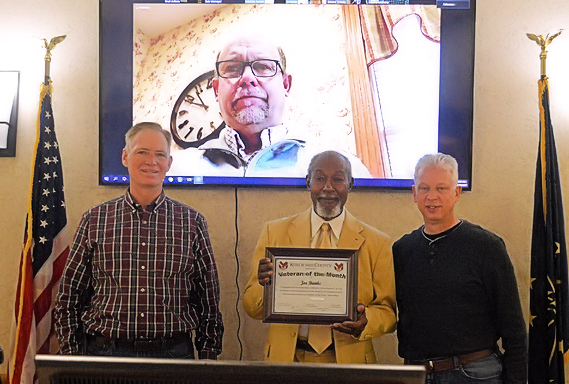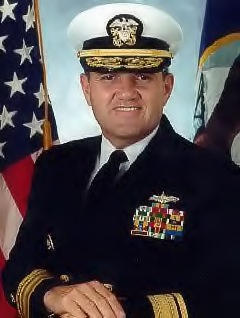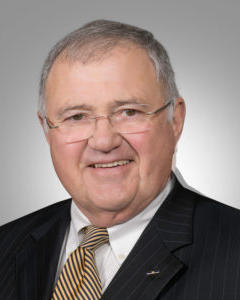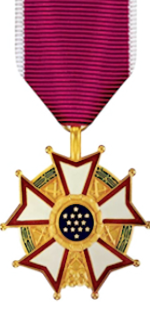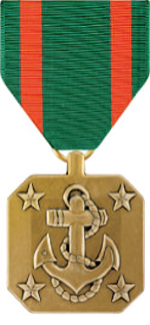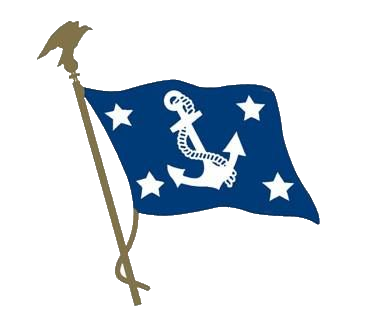 |
FAMOUS PEOPLE WHO VISITED OR SERVED ON THE ROCK USS LITTLE ROCK ASSOCIATION |
 |
Famous Crew Who Served On
The U.S.S. Little Rock
The crew members listed below are those who have distinguished themselves in some unique way during or after their tours of duty on the U.S.S. Little Rock. If you know of someone who both served on the Little Rock and who has earned notoriety in a positive sense, please submit their name and your reason for nominating your choice to the web coordinator. |
| Who Where These "Famous Crew Members"? |



|
Captain Frank C. Caldwell USMCFrank C. Caldwell, Col., USMC (ret.) was born in Spartanburg, South Carolina. He attended Davidson College, and joined the Marine Corps in Quantico, VA in 1942. He finished Marine Parachute School at Camp Lejeune, NC, and was assigned to the 1st Marine Parachute Battalion. He was assigned to the Pacific Theater in New Caledonia where he served as a Platoon leader, Executive Officer and Company Comander of "A" Company, Parachute Battalion. He saw combat action against the Japanese on Guadalcanal, Vella La Vella and Bougainville, in the British Solomon Islands. After the Parachute Battalions were deactivated, he was assigned to join the 5th Marine Division at Camp Pendleton, CA, having been promoted to Captain and Commanding Officer of "F" Company, 26th Marines, 2nd Battalion (George Wahlen's unit). His unit landed on Iwo Jima on D-Day, February 19, 1945. For a single battle, his unit suffered the highest killed-in-action rate of any Marine Company in U.S. history. Near the end of the campaign, he continued to fight with no officers, and very few Sergeants remaining. He was one of, if not the only Company Commander to endure the entire Iwo Jima campaign without being killed or evacuated. For his efforts on Iwo Jima, he was decorated with the Navy Cross and Purple Heart. During peacetime, he served at Marine Barrack, Navy Air Base in Glynco, GA, then spent two years as Marine Detachment Commanding Officer on the U.S.S. Little Rock CL 92 1946-48. He spent three years with the Testing and Educational Unit at Quantico, VA, and two years as a Marine Officer/Instructor for the N.R.O.T.C. Unit at the University of North Carolina in Chapel Hill, NC. He served in Korea in 1953-54 as an Executive Officer for the 2nd Battalion, 7th Marines. In 1954-55, he served at the Advanced Infantry Officer School at Fort Benning, GA. From 1955-1958, he was assigned as a Marine Officer/Instructor at the U.S. Military Academy at West Point. He attended Senior School in Quantico, VA from 1958-59, and then became an instructor there until 1962. He was assigned to the Operations Branch, G-3 Division, Headquarters Marine Corps from 1962-63, then became Director of Marine Corps History from 1963-1973, when he retired with the rank of Colonel. He received the following decorations, medals, badges, commendations, citations and campaign ribbons: Navy Cross, Legion of Merit, Navy Commendation, Purple Heart, Presidential Unit Citation, American Campaign Medal, Asiatic-Pacific Campaign Medal w/4 stars, WWII Victory Meal, Navy Occupation Service Medal, Korean Service Medal w/1 star, U.N. Service Medal, Korean P.U.C., Navy and Marine Corps Parachute Insignia, National Defense Service Medal 2nd Award, Navy Unit Citation, Republic of Korea, War Service Medal (K.W.S.M.) Col. Frank Crosland Caldwell died on 03 June 2015, in Newport, RI, at the age of 94, and is buried in Arlington National Cemetery, Arlington County, Virginia, Section 57. The above is from "Where Are They Now", a website devoted to the men mentioned in the book: "The Quiet Hero" the story of Medal of Honor Medal recipient George E. Wahlen, written by Gary W. Toyn. Navy Cross CitationCitation: The President of the United States takes pleasure in presenting the Navy Cross to Frank C. Caldwell (0-11328), Captain, U.S. Marine Corps, for extraordinary heroism as Commanding Officer of Company F, Second Battalion, Twenty-Sixth Marines, FIFTH Marine Division, in action against enemy Japanese forces on Iwo Jima, Volcano Islands, from 19 February to 16 March 1945. When his company encountered heavy opposition from Japanese forces entrenched in a network of caves on 26 February, Captain Caldwell skillfully organized and coordinated his attack over most difficult terrain, exposing himself to heavy enemy fire to insure the execution of his mission. Again, on 3 March, he led his company in a six hundred yard advance under heavy fire which inflicted extremely high casualties among his men. When his platoon leaders became casualties and the platoons became disorganized, he personally organized and maintained contact in his units despite hostile fire, and with unflagging determination and courage, inspired his men to hold the objective. By his indomitable fighting spirit throughout the operation, Captain Caldwell contributed materially to the success of his company. His devotion to duty was in keeping with the highest traditions of the United States Naval Service. |
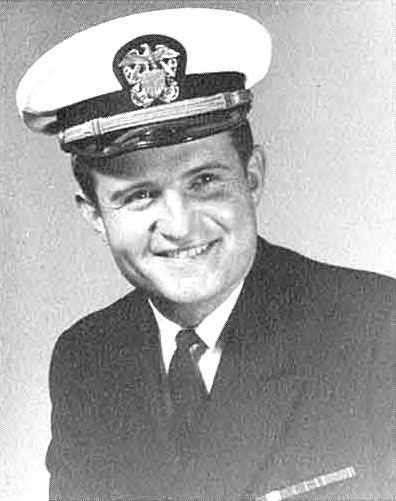
|
LT Donald G. DrozDonald Glenn Droz was born in Rich Hill, MO on 29 September 1943. He graduated from the U.S. Naval Academy in 1966. LTJG Donald G. Droz was stationed aboard the U.S.S. Little Rock CLG 4 in 1967 -1968. He was a member of the ship's Navigation Division. LTJG Droz was born in Rich Hill, MO 29 Sep 1943. While in Vietnam he was OinC of Patrol Craft PCF-43, assigned to COSDIV-11, TF-115, USNAVFORV. The following is extracted from "The Death Of PCF 43" by LTJG Peter N. Upton: "Between the hours of 1800-1900, 12 April 1969, at a well camouflaged sector along the narrow Duong Keo, southernmost in South Vietnam's vast system of navigable waterways, U.S. Navy PCF's ("swiftboats") then supporting Vietnamese Marine river operations under the aegis of SEALORDS incurred their most devastating and demoralizing setback to date. A well-planned and perfectly executed Viet Cong heavy weapons ambush inflicted heavy material damage to every swiftboat unit involved in the action and accounted for thirty-nine wounded in action, many seriously and requiring immediate medical evacuation. Vietnamese Marine casualties were of equal severity. |


Aboard Little Rock (1960-61 Cruise Book) |
LCDR Arthur J. Elliot, II"Jack", as his friends and family called him, was born in Rockland, Maine, April 9, 1933. He graduated from Thomaston (Maine) High School in 1950 and went on to receive a Bachelor of Science Degree in 1955 from Gorham State Teachers College in Maine where he majored in industrial arts. After graduation he taught high school industrial arts for one year. Then, after attending US Navy Officer Candidate School in Newport, RI he was commissioned in the U.S. Navy on 12 October 1956. Upon graduation from OCS school, Ensign Elliot was assigned to USS LYMAN K. SWENSON (DD 729) where he served for two years and nine months, qualifying as OOD and filling billets as anti-submarine warfare officer, gunnery officer, damage control officeer and electrical officer. During this period, he was promoted to Lieutenant Junior Grade. Elliot resigned from the Navy on 09 Aug 1959 to take a position as an industrial arts instructor in a new high school opening in Augusta, Maine, while at the same time remaining in the Naval Reserve. A year later, on 05 May 1960 he returned to active duty, assigned to USS Little Rock CLG 4, where he participated in Sixth Fleet exercises in the Mediterranean, during which time he was promoted to Lieutenant, along with receiving additional duties of CIC Officer. In July 1962 he was assigned as Aide and as Flag Lieutenant to Rear Admirals William D. Irwin and Rear Admiral Redfield Mason Commander, Service Forces, Pacific Fleet, Pearl Harbor. He then was assigned to the USS JOHN KING DDG 3. This was followed by promotion to Lieutenant Commander where Elliot became the ship's Operations Officer. LCDR Elliot in Jan 1968 volunteered for duty in Vietnam. While there he was named Commanding Officer of PBR (Patrol Boat River) Squadron 57 in the Mekong Delta area. He served in this capacity until killed in action on 29 Dec 1968. LCDR Elliot never married. LCDR Elliot's citations include:Legion of Merit,Bronze Star Purple Heart, Vietnam Gallantry Cross with palm, National Order of Vietnam (5th Class), Vietnam Campaign Ribbon, Armed Forces Expeditionary Service Medal, and the U.S. Navy Expeditionary Medal. The following is from the USS Elliot website:"USS ELLIOT (DD 967), commissioned on January 22, 1977, is the fifth ship of the 31-ship class of SPRUANCE destroyers. She is named in honor of LCDR Arthur J. Elliot, II, who, while in command of River Squadron FIFTY-SEVEN, was killed on December 29, 1968 during an engagement with enemy forces in the Mekong Delta, Vietnam. ELLIOT is the first ship of the class to bear the name of a Vietnam war hero." For more info on Arthur Elliot:http://www.usselliot.org/aje_bio.htmhttp://www.usselliot.org/mission.htm http://www.usselliot.org/namesake.htm |


|
Captain Ralph M. Gambone Jr. USN (Ret)Captain Ralph M. Gambone Jr., a native of Annapolis, Md., enlisted in the Navy in 1969 after receiving his bachelor's degree in music from Towson State College (Maryland). He was first assigned to the U.S. Naval Academy Band in Annapolis, Md., as a clarinet instrumentalist and also served as conductor of the Midshipman Stage and Concert Bands. While there he earned a master's degree in music from Catholic University in Washington, D.C. After a tour of duty aboard the cruiser USS Little Rock CLG 4, Gambone was assigned to the U.S. Navy Band in Washington, D.C. After three years with the Band and a promotion to chief musician, he was assigned to the Bureau of Naval Personnel as Assistant Budget Manager for the Navy Music Program in 1978. In 1981, he was commissioned an ensign and reported for duty as Music Program Liaison Officer for the Navy Chief of Information in the Pentagon. After two years as Director, Navy Band San Diego, he was assigned as the U.S. Navy Band Supply Officer in 1985, and a year later assumed the duties of the U.S. Navy Band's Assistant Leader. From August 1988 to June 1990, he served as Director, SEVENTH Fleet Band, stationed on board the USS Blue Ridge (LCC 19) in Yokosuka, Japan, before returning to the U.S. Navy Band as Assistant Leader. His next assignment took him to the Armed Forces School of Music in Little Creek, Va., where he served first as Executive Officer from March to August 1994, then as Commanding Officer. Captain Gambone became leader of the U.S. Navy Band on 13 Aug 1998, after a highly successful tour as Director of the U.S. Naval Academy Band in Annapolis, Md. He was promoted to his present rank in October 2002. In April 2001, Captain Gambone was inducted into the prestigious American Bandmasters Association (ABA), the professional association of master conductors and musicians. In May 1991, he received the Distinguished Achievement Award in music from Towson State University. From 1998 - 2007 Captain Gambone lead the U.S. Navy Band, Washington, DC. His awards include the Meritorious Service Medal (two awards), Navy and Marine Corps Commendation Medal (two awards), Navy and Marine Corps Achievement Medal, Army Achievement Medal, Meritorious Unit Commendation Medal (four awards) and others. Highlights during CAPT Gambone's tenure include:
|


|
On March 27, 2009 President Barack Obama nominated USS Little Rock shipmate Raymond Mabus (see below) as the new Secretary of the Navy. After receiving unanimous Senate approval on May 18, 2009 Mr. Mabus was sworn in on June 18th as the 75th Secretary of the Navy. On July 18, 2009 Secretary Mabus was the guest speaker at the USS Little Rock Association's annual reunion held in Buffalo, New York. Ray Mabus has served as Governor of Mississippi and US Ambassador to the Kingdom of Saudi Arabia. In addition he has served as Chairman of a large manufacturing company, managed a family timber business and served on various corporate and charitable boards. Although Ray Mabus was the youngest governor in America at the time of his inauguration on January 12, 1988, he had accumulated an impressive record of public service and academic achievements. Born October 11, 1948, in Choctaw County, Mississippi, Mabus had earned three degrees: a bachelor of arts from the University of Mississippi (summa cum laude); a master's in political science from Johns Hopkins University; and a law degree from Harvard (magna cum laude). He had been offered a Fulbright Scholarship, had held a Woodrow Wilson Fellowship, and had traveled widely throughout Europe, the Middle East, Russia, and Latin America. In addition to a two-year tour of duty in the United States Navy aboard the guided missile cruiser U.S.S. Little Rock (as a LTJG in 1971 and 1972), Secretary Mabus had also served as a law clerk in the United States Fifth Circuit Court of Appeals, as a legal counsel to a subcommittee of the House Agriculture Committee, and as legal counsel to Governor William Winter. In 1983 Mabus was elected State Auditor of Mississippi in his first campaign for public office. While in this post he was chosen as one of Esquire's Top Forty Under Forty and was the subject of a front-page article in the Wall Street Journal. In 1988, while not yet forty years old, Ray Mabus was elected governor on the slogan, "Mississippi Will Never Be Last Again." Later he was chosen in a poll of Mississippians as the Best Governor of the 20th Century. Governor Mabus has been awarded the U.S. Department of Defense Distinguished Public Service Award, the U.S. Army's Distinguished Civilian Service Award, the Martin Luther King Social Responsibility Award from the King Center in Atlanta, the National Wildlife Federation Conservation Achievement Award, the King Abdul Aziz Award from the Kingdom of Saudi Arabia, and the Mississippi Association of Educators' Friend of Education Award. Governor Mabus was appointed U. S. ambassador to Saudi Arabia by President Bill Clinton and served in that position from 1994 through 1996. Following Hurricane Katrina Secretary Mabus was a founder of the Help and Hope Foundation, which works to meet the needs of children affected by the storm. He has also served as a member of the RAND Center for Mid-East Public Policy and the Council on Foreign Relations. He has been the Distinguished Lecturer on the Middle East at the University of Mississippi. As a photographer, his photographs have raised tens of thousands of dollars for various Mississippi charities. On July 23, 2015 the Naval History and Heritage Command published the following in "OUR PEOPLE" an article titled "SECNAV Ray Mabus Surpasses Historic Milestone".The article states in part: "Secretary of the Navy Ray Mabus surpassed a historic milestone this week - serving longer than any other Secretary of the Navy since the Department of Defense was created in 1947.... SECNAV Mabus passed former Secretary of the Navy John Lehman, who served in the position from Feb. 5, 1981 until April 10, 1987 for a total of 2,255 days. ..Although Mabus is the longest serving SECNAV since the DoD was created by President Harry S. Truman, overall he is sixth on the all- time list of Secretaries of Navy, which began Oct. 13, 1775. ..Should he remain in office at least through the rest of President Obama's term that ends Jan. 20, 1917, Mabus will have amassed seven years, eight months and three days, taking the No. 4 position.... " (The need for someone to report to the president about naval activities was established the same date as the 's birthday: Oct. 13, 1775) Read the entire article at the Naval History and Heritage Command's website. |
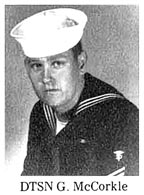
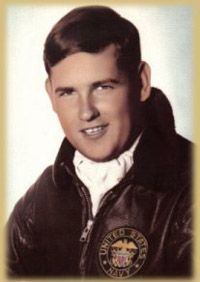



|
George McCorkleGeorge McCorkle was born in Chester SC and raised in nearby Spartanburg. George recalls "We were a typical South Carolina mill family,"...."Very poor." He was drafted into the Navy as an 18 year old graduate of Spartanburg High School and was stationed on the USS Little Rock in 1966 and 1967 as a DTSN while the ship was homeported in Gaeta, Italy. After his discharge from the Navy, George decided to return to what he loved most in life: making music. To supplement his professional music livelihood he took gigs as a dental lab technician, race car driver, car salesman, and owner of both a glass company and a car lot. He believes his work ethic has its roots in his "meager beginnings" and "growing up Southern". In an effort to mature musically, George performed with The Toy Factory and Pax Parachute. George was a founding member of The Marshall Tucker Band formed in Spartanburg in 1972. In 1973 an album changed the sound of Rock and Roll Forever! That album "Marshall Tucker Band" contained hits like "Take the Highway" and the southern rock anthem "Can't you See". The Marshall Tucker band combined Country, Rock, Jazz, and Blues to create an original sound which transcended all music boundaries. To this day Marshall Tucker songs can be heard on both rock and country stations around the world. President Jimmy Carter had this to say: "The Marshall Tucker Band has always been one of my favorite performing groups........They certainly deserve a place in the Rock and Roll Hall of Fame." Music is George McCorkle's passion. He has enjoyed great success with the Marshall Tucker Band, as a solo artist and through the legacy of songs that he is actively creating. He has played beside B.B. King, Carlos Santana, Dickie Betts, Charlie Daniels and a host of other legendary guitar players. George now resides outside of Nashville TN with his wife Vivienne and his family. The above was excerpted from the Marshall Tucker Band web site which can be found at: www.originalmarshalltucker.com. Obituary - George McCorkle.....Founding Marshall Tucker Band guitarist, songwriter and Spartanburg native George McCorkle, who composed one of the band's biggest hit songs, "Fire on the Mountain," died in Nashville Friday (June 29, 2007) morning.....he was 60 years old......A revered rhythm guitarist, McCorkle's percussive and textural rhythm guitar was a fundamental component of the band's sound, lending elements of blues, R&B and funk to a signature rhythmic pulse and distinctive Southern-rock sound. The above was added to this page on 28 January 2008. Derived from the Spartanburg, SC Herald-Journal Obituary - George F. McCorkleBirth: Oct. 11, 1947 Musician. A founding member of the southern rock group, the Marshall Tucker Band. He was raised in Spartanburg, South Carolina, and at 18 was drafted into the United States Navy, serving on the USS Little Rock while it was stationed in Italy (1966 to 1967). After his discharge from the service, he decided to turn his attention to music. He played guitar with The Toy Factory and Pax Parachute, and in 1972, co-formed the Marshall Tucker Band. In 1973 the band released the album the "Marshall Tucker Band" which included "Take The Highway" and "Can't You See", which are still played on the radio today. McCorkle left the group in 1984 to become a full-time songwriter in Nashville. He made his last guest appearance with the Marshall Tucker Band in August 2006 and also played on the 2005 "Carolina Christmas" CD. He died of cancer at the University Medical Center in Lebanon, Tennessee. Buried at: Greenlawn Memorial Gardens, SpartanburgSC , USA The above obituary was obtained from http://www.findagrave.com The picture on the immediate left was provided by Ron Moody to www.findagrave.com. |
Gen. Carl E. Mundy, Jr.Carl Epting Mundy Jr. born July 16, 1935, was the Commandant of the United States Marine Corps and member of the Joint Chiefs of Staff from July 1, 1991 until his retirement on June 30, 1995. A native of Atlanta, Georgia, he currently serves on the boards of directors of Schering-Plough and General Dynamics. Mundy is also a member of the Council on Foreign Relations. Military experience: Enlisted in the Marine Corps reserve and enrolled in the Platoon Leaders Class Program December 1953. Served in the 38th Special Infantry Company, Montgomery, AL, and rose to the grade of sergeant. He was commissioned a 2nd LT June 1957, following graduation from Auburn University. Assignments included: 2nd Marine Regiment, 2nd Marine Division; aircraft carrier USS Tarawa, cruiser USS Little Rock; instructor at The Basic School and Officer Selection Officer, Raleigh, NC. In 1966-67, he served in Vietnam as operations and executive officer of 3d Battalion, 26th Marine Regiment, 3rd Marine Division, and as an intelligence officer in the Headquarters, III Marine Amphibious Force. After Vietnam, his principal assignments were:
Following advancement to Brigadier General in April 1982, General Mundy's assignments were:
General Mundy is a native of Atlanta, Georgia, but spent his formative years in Tennessee, North Carolina, and Alabama. He graduated from the Marine Corps Command and Staff College, and the Naval War College. His United States decorations include the Defense Distinguished Service Medal and the Distinguished Service Medals of the Army, Navy, Air Force, and Coast Guard; the Legion of Merit, the Bronze Star Medal, the Purple Heart Medal, and two Navy Commendation Medals. His foreign decorations include Vietnamese Cross of Gallantry, the Colombian Distinguished Service, the Spanish Grand Cross of Naval Merit; the French Legion of Honor, Grade of Commander, the Argentinean Grand Cross, the Royal Norwegian Order of Merit, Grand Cross; and the Netherlands Medal of Merit. From Wikipedia, the free encyclopedia Excerpted from a Marine Corps Times article by Hope Hodge Seck, April 3, 2014
Following his retirement in 1995 after a 38-year military career, Mundy went on to serve as president and CEO of the USO and also served as chairman of the Marine Corps University Foundation. Mundy's two sons followed him into the Marine Corps. His oldest son, Brig. Gen. Carl E. Mundy III currently serves as commanding general of the 1st Marine Expeditionary Brigade in California, while Col. Timothy S. Mundy serves as chief of staff for Combat Development and Integration at Marine Corps Combat Development Command in Quantico, Va. He also survived by a daughter, Elizabeth Gunter. Mundy's wife of 56 years, Linda Sloan Mundy, died last June. She was 78. In a statement released April 3, Marine Commandant Gen. Jim Amos called Mundy "a valiant warrior, a dedicated public servant, and a good and decent man." A note from shipmate Woody Donaldson: ". . . I remember him coming into the barbershop for haircuts." |

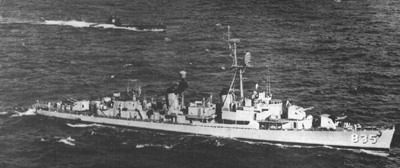
|
Commander Charles P. RozierCommander Charles P. Rozier, a native of Sparta, Georgia, entered the U.S. Naval Academy in 1940, after three years at Emory University. He was commissioned upon graduation in 1943. While serving in USS TUSCALOOSA (CA37), he participated in the regarrisioning of Spitsbergen October 1943; the Normandy invasion, Cherbourg bombardment, and Southern France invasion, 1944; Iwo Jima and Okinawa battles, 1945. In other tours of duty afloat, he has served as Gunnery Officer in USS BASILONE (DDE 824), Executive Officer in USS DASHIELL (DD 659), Commanding Officer in USS WOODSON (DE 359), Operations Officer in USS LITTLE ROCK CLG 4 1960-1961, and Commanding Officer of USS Charles P. Cecil (DD/DDR-835). He holds a Bachelor of Science degree in Electrical Engineering from Massachusetts Institute of Technology and a Master of Science degree in Management and Industrial Engineering from Rensselaer Polytechnic Institute. The following is from Time Magazine, June 1962"Sighted Sub, Surfaced Same"
The following information not in the above article was provided by Captain Rozier;
It was not until 2001 that then-Captain Rozier learned that the Soviet submarine was carrying a nuclear warhead-tipped torpedo with the explosive energy of the Hiroshima bomb. Note 1. Other sources relate that the Cecil's message was "Do you need help?", to which the Russian sub replied "We do not need any help. Asking you not interfer with our actions." In early November 2012 we received notice that Captain Rozier had passed away on 15 April 2012. Rozier, Charles P.
|


|
Rear Admiral Roger O. SimonRoger O. Simon was born in Perham, MN, enlisted in the Navy in Oct 1950 and served as a radioman on USS W.B. COBB (APD-106) and on the staff of COMFAIRWINGSLANT. In 1955 RM1 Simon was appointed to OCS Newport, RI, and upon graduation received orders to USS BULWARK (MSO-425) as Minesweeping and Gunnery Officer, and subsequently to USS BITTERN (MHC-43), USS ROSS (DD-536), and USS D.H. FOX (DD-799). In 1961 he was ordered to shore duty with Defense Communications Agency, Washington, DC. From 1963 to 1965 he served as Aide and Flag Secretary to Commander, Cruiser Destroyer Flotilla EIGHT. From 1967 to 1969 Admiral Simon was Executive Officer in USS HOLDER (DD-819), and from Mar 1969 to Jul 1970 he was Deputy J-6 on the staff of the UN Command / US Forces, Korea. Admiral Simon commanded the fleet frigate USS EDWARD McDONNELL (FF-1 043) from Aug 1971 until Feb 1973 when he was ordered to the SIXTH Fleet Flagship, USS Little Rock CLG 4 as Executive Officer. His next assignment was as CO of Naval Communication Station, Morocco from May 1975 until Feb 1977. In addition Admiral Simon has had the following assignments: CO of USS RICHMOND K. TURNER (CG-20) Aug 1977 - Jan 1980, Deputy Commander, Naval Telecommunications Command Feb 1980 - Aug 1982. In Dec 1981 Admiral Simon was selected for Commodore, and in Aug 1982 promoted to Flag grade. Admiral Simon served as Deputy Commander, Command Control, Communications and Intelligence (C31) Systems and Technology Directorate, Space and Naval Warfare Systems Command, Washington, D.C. from Sep 1982 until Jan 1986, followed by assignment as Assistant Deputy Commander for Electronic Warfare Systems, Naval Sea Systems Command. After his retirement in 1987, Admiral Simon joined Systems Exploration, a (C4I) Systems Engineering Company, as VP for Eastern Operations and remained in that position until 1991. Admiral Simon is a graduate of the Naval Postgraduate School, Monterey, CA, where he was awarded a B.S. degree in International Relations. He also holds a Master's degree in International Affairs from George Washington University and is a graduate of the Naval War College (Naval Warfare), Newport, RI. Admiral Simon is married to the former Phyllis Antoson of Frazee, MN. They have two children, Craig and Shelley. The Simons reside in Little River, SC. Click HERE to read RADM Simon's Oral History. The crew remembers....Received from LCDR Frank Gates, USN, Ret on 18 Jun 2009
|
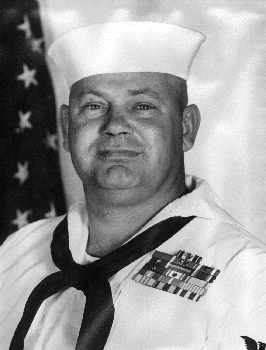

Medal of Honor from President Lyndon Johnson 

DDG-95 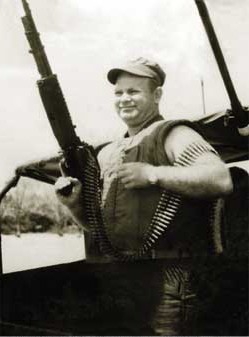
Just ask the Viet Cong!" |
James Elliott Williams
|
|
 |
Williams received the Medal of Honor from President Lyndon Johnson at a ceremony at the Pentagon. The Citation reads in part
"For conspicuous gallantry and intrepidity at the risk of his life above and beyond the call of duty..........extraordinary heroism and exemplary fighting spirit in the face of grave risks inspired the efforts of his men to defeat a larger enemy force, and are in keeping with the finest traditions of the U.S. Naval Service."
In the history of the U.S. Navy only seven men have earned all of the "Big Three" valor awards: the Medal of Honor, the Navy Cross and Silver Star Medal. Six of those were World War II officers, including one aviator and four submarine commanders. The seventh was enlisted man, and prior USS Little Rock sailor James Elliott Williams.
In 1999, Williams died on the Navy's birthday, October 13th, and was buried at the Florence National Cemetery in Florence, South Carolina.
More information on the U.S.S. James Elliott Williams DDG-95 can be found at:
http://www.navsource.org/archives/05/01095.htm
A full copy of the Medal of Honor Citation, as well as a more detailed biography of James Elliott Williams can be found at:
https://www.cmohs.org/recipients/james-e-williams
Additional information can be found at:
https://en.wikipedia.org/wiki/James_E._Williams
The crew remembers....
Received from Commander Ed Daly 01 May 2008
USS Little Rock (1961-1963, 1974-75)
I was Personnel Officer on Little Rock from Dec. 1961 to August 1963, having just been selected in the LDO program. During that period the Navy instituted the Career Counselor billet on all major combatants to boost reenlistment rates. BM2 James Williams was having some problems as mess deck MAA and the XO informed me that he was going to select him for the new billet which would come under my supervision. So, off he went to Career Counselor school.
When he returned, almost every day, he would come charging into the office with a potential seaman or PO3 in tow. He was as gruff as hell and would say something to the effect: "Mr. Daly, this is so-and-so and he thinks he wants to reenlist but I've talked to his division officer and he doesn't think too much of him, and I don't either--but you decide what to do." I would get the prospect's service record and invariably it showed that the their marks were 3.6. to 4.0 across the board, with no problems with discipline. It was Williams' reverse psychology he was using. And it worked!! The Little Rock reenlistment rate went through the roof and led almost every ship in the Atlantic Fleet and was ALWAYS #1 in CruLant.
A little aside. Williams was from Darlington, SC and had an auto dealers license. He would make it known that he could get vehicles for crew members at a lot better prices than they could in the Norfolk area. He would take orders for vehicles (general description such as "Chevy 4 door", "Buick Station wagon", "nothing more than two years old" etc.) and attend auctions in Darlington on long weekends and while on leave. If he spotted a vehicle someone wanted, he would buy it and resell it to crew members at a bargain price. He dealt mostly with officers and chiefs who had the money or could get a bank or credit union loan in a hurry.
BM2 Williams also ran a slush fund---you know just before payday loaning $5. for a payback of $7 a couple of days later. He never went to Mast for it but he supposedly shut the operation down. He was quite a character and now is the most decorated enlisted man in history, including all of the Armed Forces!!
